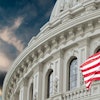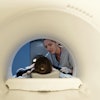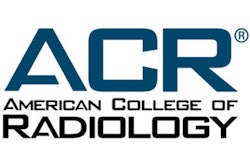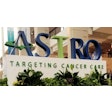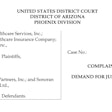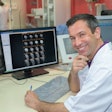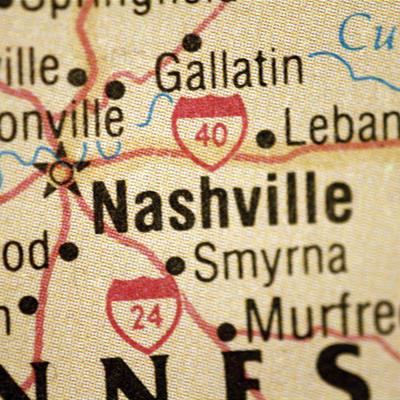
It's been a year since the Joint Commission published new accreditation standards that outlined a higher level of scrutiny for CT, MR, and nuclear medicine/PET imaging. In that time, facilities have gathered experience that can help other sites prepare, according to a presentation given at this week's AHRA 2016 meeting.
To that end, presenter W. Geoffrey West, PhD, outlined six key areas that facilities should focus on as they prepare for a Joint Commission visit. West is president of West Physics, a consulting firm in Atlanta.
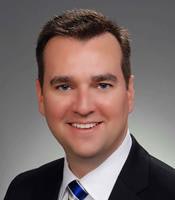 W. Geoffrey West, PhD, of West Physics in Atlanta.
W. Geoffrey West, PhD, of West Physics in Atlanta."Joint Commission-accredited facilities that have not yet been surveyed under the new radiology rules can learn a lot from the experiences of other facilities and also the Joint Commission's own published feedback data," West told AuntMinnie.com.
Full release
The Joint Commission released prepublication accreditation standards in December 2013, followed by a revised version in January of last year. The implementation date of the standards was July 1, 2015, although the organization extended the annual equipment survey deadline to July 1 of this year.
After a year of survey experience, the Joint Commission has made a few changes to its process, including adding radiologists to its surveyor pool of healthcare administrators, nurses, and general physicians; conducting staff interviews; performing more direct observation; and spending more time in imaging departments, according to West.
"Surveyors are spending more time in imaging departments and drilling down deeper in terms of the quality of imaging and patient and personnel safety," he said.
The Joint Commission has also changed a few requirements for technologists, deleting the requirement that they obtain advanced-level CT certification by January 2018 and suspending the requirement that they participate in education that prepares them for this certification.
Finally, the Joint Commission has listed the most frequent areas of noncompliance in the year since the accreditation standards were implemented. West shared results from 57 centers that had accreditation visits between July 2015 and March 2016. The top five areas of noncompliance were as follows:
- MR access was not restricted.
- Ferromagnetic items were found in the MR area.
- There were weaknesses in CT protocol review.
- CT quality control logs were incomplete.
- The MR area lacked appropriate signage.
6 areas of focus
So what should your facility do before the Joint Commission comes calling? Pay attention to these six areas, West said.
1. Safety and security
Facilities can expect the Joint Commission to observe how staff members manage patients with claustrophobia or anxiety during MR exams, whether they are prepared to respond to a need for emergency medical care during these exams, and whether it is clear that this kind of care needs to be conducted beyond the magnetic field in the MR suite. It will also check that the facility is preventing ferromagnetic objects from entering the magnetic field, whether staff provides hearing protection for patients, whether the surveyors themselves will be safety screened, and whether there is appropriate signage warning of the dangers of MR.
2. Hazardous material and medical equipment risk
For CT and nuclear medicine/PET, does your facility have current dosimetry reports available for review by the surveyors? Is there evidence that these reports have been reviewed by the facility's radiation safety officer, diagnostic medical physicist, or health physicist? Surveyors will also look for whether staff is being exposed to excessive radiation and whether staff is supported to maintain as low as reasonably achievable (ALARA) standards for keeping radiation dose low.
Plan on surveyors requesting quality control records for each modality, as well as tolerance thresholds for quality control test results, West said.
"Surveyors will ask what the staff does if any of the quality control results fall out of tolerance thresholds," he said. "Is there a defined process for reporting the findings, and for servicing or recalibrating equipment?"
3. Equipment inspection and maintenance
CT scanners must be tested at least once a year by a diagnostic medical physicist for appropriate radiation dose. Joint Commission surveyors will ask to see this report to confirm that this dose testing has been completed for adult and pediatric brain and abdomen studies, and that the device's CT dose index volume (CTDIvol) is within the allowable 20% difference between acquisition and display values, West said.
"The Joint Commission will allow substitute clinical procedures if the facility does not perform the recommended procedure routinely -- such as pediatric exams," he said. "And surveyors will not expect the facility to provide the CTDIvol results if the scanner is not capable of reporting this value."
The commission will confirm that the facility has performed an annual physics survey for all MR, CT, and nuclear medicine/PET equipment, and it will ascertain what staff members do if any of these results are out of compliance, according to West. It will also ask to see annual performance evaluations for image acquisition display monitors.
"Radiologist surveyors will dig deeper into the survey results, as they have more subject-matter expertise in quality control factors than nonradiologist surveyors," he warned.
4. Staff qualifications
Expect the Joint Commission to ask for evidence that medical physicists, health physicists, or MR scientists who perform annual equipment surveys are qualified, and to ask to see evidence that the facility conducts annual CT radiation dose reduction and MR safety training for technologists, West said. Surveyors may also ask for proof that technologists are certified.
5. Medication and dose tracking
Surveyors will confirm that nuclear medicine and PET radiopharmaceuticals are administered within the 20% dose prescribed for the patients.
"Surveyors will check the patient's dose prescription, the radiopharmacy dose records, and how written dose-range policy is put into effect," he said.
The Joint Commission will also confirm that every CT study performed has the dose recorded, either electronically or manually. Surveyors will ask staff members if they confirm the right patient, right study, and right body part before performing the exam, and whether clinical protocols are approved by appropriate staff at least once a year.
"Surveyors may ask if the organization has identified at what age a patient is considered pediatric or adult, and how technologists adjust protocols for age appropriateness," West said.
6. Improving performance
Don't be surprised if surveyors ask staff, through direct interviews, whether burns or injuries occur in MR exams, how often, and how severe the injuries are, according to West. How do staff members determine if these events are reportable, and what are the policies and procedures for preventing these injuries? Do they feel free to report adverse events without fear of disciplinary action or termination?
Surveyors will ask how the facility collects radiation CT dose data for each patient, and whether it uses an external benchmark to compare its CT doses to those given at other facilities. How is benchmark analysis used to either reduce CT dose or improve image quality?
More to come
There's a lot to track already, but there will likely be more in the future, West said. Don't be surprised if interventional radiology, general and gastrointestinal fluoroscopy, conebeam CT, and portable C-arms make the survey list soon. After all, modern fluoroscopy equipment and procedures can deliver large amounts of radiation to patients over prolonged periods.
"Fluoroscopy and conebeam CT standards are likely to be added in the future, with an emphasis on radiation dose reduction to patients and personnel," he said.
In any case, now is a good time for Joint Commission-accredited facilities to get their programs in order, West told AuntMinnie.com.
"Now that we have almost a full year of anecdotal and empirical results from Joint Commission surveys using the new standards, facilities should take a close look at their CT, MRI, and nuclear medicine programs and audit them for compliance," he said. "That way they can ensure they're doing everything possible to enhance the protection of patients, staff, and visitors."


